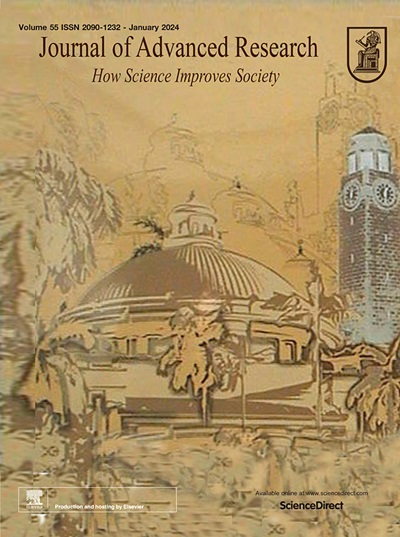Exploring the role of endogenous and exogenous silicon in reducing arsenic accumulation in rice: A multi-scale hydroponic to field study
IF 11.4
1区 综合性期刊
Q1 MULTIDISCIPLINARY SCIENCES
引用次数: 0
Abstract
Introduction
Traditionally, Silicon (Si) fertilizers are applied externally to the soil or sprayed on the leaves to reduce rice’s arsenic (As) accumulation. However, in practical agricultural production, the economic benefits of lowering As in rice grains often fail to outweigh the production costs.Objectives
This study investigated an innovative technology—Si-rich seedlings (endogenous Si)—that is simple to implement, cost-effective, and highly effective in reducing As accumulation in rice grains.Methods
The effects of exogenous and endogenous Si supplementation on As dynamics in rice were investigated in hydroponics in field experiments.Results
Both methods significantly reduced As accumulation in the rice grains (22.23 % and 17.70 %, respectively). There was no significant difference in the treatment effects. However, endogenous Si supplementation demonstrated a significantly lower cost per unit of As reduction (88.61 % decrease), and it was easier to implement when compared with exogenous Si supplementation. The main processes by which various Si treatment techniques decrease As accumulation in rice differed, even though Si was crucial to As absorption in rice through a combination of mechanisms, such as gene regulation, iron plaque inhibition, and node I sequestration. The fundamental mechanism was Si/As antagonism, which regulated Si absorption through gene regulation in both methods. Interestingly, the exogenous Si treatment improved the barrier function of the root surface iron plaque against As. At the same time, laser ablation-inductively coupled plasma-mass spectrometry (LA-ICP-MS) demonstrated that endogenous Si had a more pronounced impact on rice node I. Furthermore, experiments conducted at multiple scales (including variety, pot, and field experiments) validated the stability and reliability of the Si-rich seedling technology under complex environmental conditions.Conclusion
Si-rich seedlings provide a cost-effective, stable, and practical solution for mitigating As contamination in paddy fields. This approach holds significant potential for enhancing soil health and improving food safety, contributing to the sustainable development of rice cultivation.

求助全文
约1分钟内获得全文
求助全文
来源期刊

Journal of Advanced Research
Multidisciplinary-Multidisciplinary
CiteScore
21.60
自引率
0.90%
发文量
280
审稿时长
12 weeks
期刊介绍:
Journal of Advanced Research (J. Adv. Res.) is an applied/natural sciences, peer-reviewed journal that focuses on interdisciplinary research. The journal aims to contribute to applied research and knowledge worldwide through the publication of original and high-quality research articles in the fields of Medicine, Pharmaceutical Sciences, Dentistry, Physical Therapy, Veterinary Medicine, and Basic and Biological Sciences.
The following abstracting and indexing services cover the Journal of Advanced Research: PubMed/Medline, Essential Science Indicators, Web of Science, Scopus, PubMed Central, PubMed, Science Citation Index Expanded, Directory of Open Access Journals (DOAJ), and INSPEC.
 求助内容:
求助内容: 应助结果提醒方式:
应助结果提醒方式:


